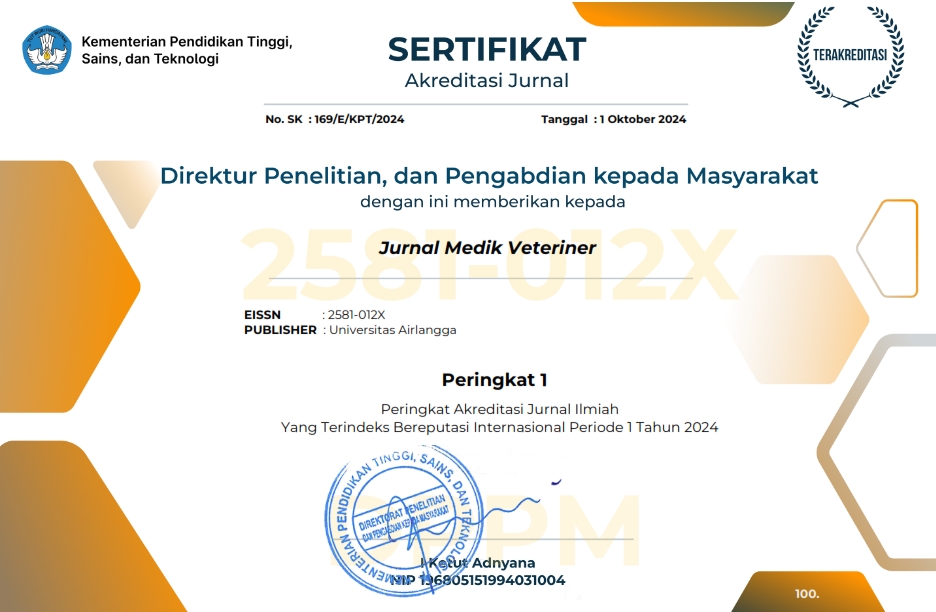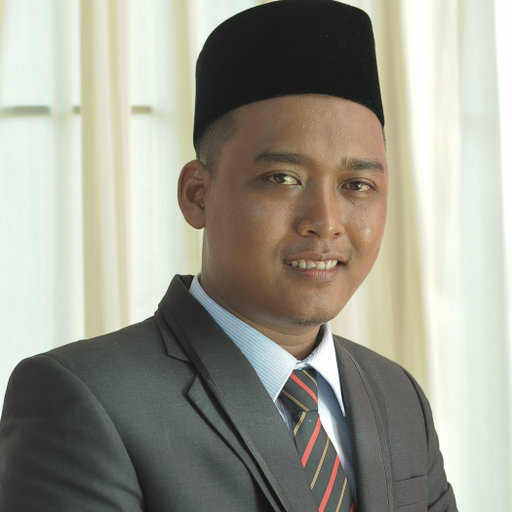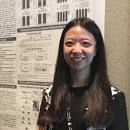Novel Surface Marker for the Prospective Mesenchymal Stem Cell Characterization from Rabbit Visceral Adipose Tissue

Downloads
Rabbit as a laboratory animals play an important role in bridging basic research to clinical application. The exploration of rabbit mesenchymal stem cell (MSC) is still facing an obstacle regarding the standardization of characterization of MSC. This study is aimed to explore the novel candidate of rabbit MSC surface marker as an effort to establish the goal standardization of rabbit MSC. Three 2-month-old male White New Zealand rabbits weighing 2 kg were used as visceral rabbit adipose derived mesenchymal stem cell (Rab-ADMSC) donors. The cells were characterized according to their morphology characteristic, clonogenic and three-lineage differentiation capacity. Flow cytometry was used to evaluate the MSC surface markers of Rab-ADMSC against CD81, CD29, CD34 and CD45. The results of this study revealed that the Rab-ADMSC posses characteristic of MSC according to their morphology and differentiation capacity. It can be concluded that CD81 surface marker can be proposed as a stable alternative candidate marker for rabbit MSCs. This data is supported by other phenotypic characteristics of MSCs, both in morphology and in the ability of visceral Rab-ADMSCs to differentiate into adipogenic, osteogenic, and chondrogenic lineages.
Ajit, A., Kumar, T. R. S., Harikrishnan, V. S., Anil, A., Sabareeswaran, A., & Krishnan, L. K. (2023). Enriched adipose stem cell secretome as an effective therapeutic strategy for in vivo wound repair and angiogenesis. Biotechnology, 13(3), 83.
Andreu, Z., & Yáñez-Mó, M. (2014). Tetraspanins in extracellular vesicle formation and function. Frontiers Immunology, 5, 442.
Bedar, M., van Wijnen, A. J., & Shin, A. Y. (2023). Safety of Allogeneic Mesenchymal Stem Cell Seeding of NeuraGen Nerve Guides in a Rabbit Model. Tissue Engineering Part C Methods, 29(2), 43–53.
Calle, A., Zamora-Ceballos, M., Bárcena, J., Blanco, E., & Ramírez, M. (2022). Comparison of Biological Features of Wild European Rabbit Mesenchymal Stem Cells Derived from Different Tissues. International Journal of Molecular Science, 23(12).
Choi, J. S., Lee, M. S., Kim, J., Eom, M. R., Jeong, E. J., Lee, M., Park, S. A., Jeong, J. H., & Kwon, S. K. (2021). Hyaluronic Acid Coating on Hydrophobic Tracheal Scaffold Enhances Mesenchymal Stem Cell Adhesion and Tracheal Regeneration. Tissue Engineering Regenerative Medicine, 18(2), 225–233.
da Silva Morais, A., Oliveira, J. M., & Reis, R. L. (2018). Small Animal Models. Advance Experimental Medical Biology, 1059, 423–439.
Dar, E. R., Gugjoo, M. B., Farooq, F., Nazir, T., Shah, S. A., Ahmad, S. M., Shah, R. A., Ahmad, R. A., Dar, S. H., & Makhdoomi, D. M. (2023). Mesenchymal stem cells derived from bone marrow and adipose tissue for repairing acute sciatic nerve injury in a rabbit model. Tissue Cell, 84, 102162.
Delaiah, D., Aswin, A., Susilowati, H., Wijaya, A. Y., Maulana, F. K., Rodprasert, W., Puspitasari, Y., Dhamayanti, Y., & Kuncorojakti, S. (2024). Epidermal growth factor promotes E6 and CCL-81 Vero cells proliferation under serum-free condition. Jurnal Medik Veteriner, 7(1), 1–6.
Kim, D. H., Kim, B. Y., Kim, D. H., Hur, J., & Baek, C. H. (2019). Rabbit palatum-derived mesenchymal progenitor cells tri-lineage differentiation on 2D substrates and 3D printed constructs. Journal of Applied Biomaterial Function Material, 17(3), 2280800019834520.
Koung Ngeun, S., Shimizu, M., & Kaneda, M. (2023). Characterization of Rabbit Mesenchymal Stem/Stromal Cells after Cryopreservation. Biology, 12(10), 1312.
Kuncorojakti, S., Pratama, A. Z. A., Antujala, C. A., Harijanto, C. T. B., Arsy, R. K., Kurniawan, P. A., Tjahjono, Y., Hendriati, L., Widodo, T., Aswin, A., Diyantoro, D., Wijaya, A. Y., Rodprasert, W., & Susilowati, H. (2024). Acceleration of wound healing using adipose mesenchymal stem cell secretome hydrogel on partial-thickness cutaneous thermal burn wounds: An in vivo study in rats [Article]. Veterinary World, 17(7), 1545–1554.
Martínez-Lorenzo, M. J., Royo-Cañas, M., Alegre-Aguarón, E., Desportes, P., Castiella, T., García-Alvarez, F., & Larrad, L. (2009). Phenotype and chondrogenic differentiation of mesenchymal cells from adipose tissue of different species. Journal of Orthopadic Research, 27(11), 1499–1507.
McClellan, P., Ina, J. G., Knapik, D. M., Isali, I., Learn, G., Valente, A., Wen, Y., Wen, R., Anderson, J. M., Gillespie, R. J., & Akkus, O. (2022). Mesenchymal Stem Cell Delivery via Topographically Tenoinductive Collagen Biotextile Enhances Regeneration of Segmental Tendon Defects. American Journal Sports Medicine, 50(8), 2281–2291.
Oguri, Y., Shinoda, K., Kim, H., Alba, D. L., Bolus, W. R., Wang, Q., Brown, Z., Pradhan, R. N., Tajima, K., Yoneshiro, T., Ikeda, K., Chen, Y., Cheang, R. T., Tsujino, K., Kim, C. R., Greiner, V. J., Datta, R., Yang, C. D., Atabai, K., & Kajimura, S. (2020). CD81 Controls Beige Fat Progenitor Cell Growth and Energy Balance via FAK Signaling. Cellular, 182(3), 563–577.
Rajagopal, K., & Madhuri, V. (2021). Comparing the chondrogenic potential of rabbit mesenchymal stem cells derived from the infrapatellar fat pad, periosteum & bone marrow. Indian Journal Medical Research, 154(5), 732–742.
Samadi, Y., Egro, F. M., Rodriguez, R., & Ejaz, A. (2022). Chapter 12 - Adipose-derived stem cells for wound healing and fibrosis. In L. Kokai, K. Marra, & J. P. Rubin (Eds.), Scientific Principles of Adipose Stem Cells (pp. 225–255). Academic Press.
Susanti, L., Kuncorojakti, S., Oktaviani, S., & Simarmata, M. G. (2024). Lower lip avulsion: Surgery and management using stem cell metabolites preparation in a domestic cat [Article]. Open Veterinary Journal, 14(8), 2092–2096.
Viswanathan, S., Shi, Y., Galipeau, J., Krampera, M., Leblanc, K., Martin, I., Nolta, J., Phinney, D. G., & Sensebe, L. (2019). Mesenchymal stem versus stromal cells: International Society for Cell & Gene Therapy (ISCT®) Mesenchymal Stromal Cell committee position statement on nomenclature. Cytotherapy, 21(10), 1019–1024.
Wang, T., Hill, R. C., Dzieciatkowska, M., Zhu, L., Infante, A. M., Hu, G., Hansen, K. C., & Pei, M. (2020). Site-Dependent Lineage Preference of Adipose Stem Cells. Frontiers Cellular Developmental Biology, 8, 237.
Wicaksono, S., Nugraha, A. P., Rahmahani, J., Rantam, F. A., Kuncorojakti, S., Susilowati, H., Riawan, W., Arundina, I., Lestari, P., Masya, R. N., Surboyo, M. D. C., & Ernawati, D. S. (2024). Adipose Mesenchymal Stem Cell Metabolites Oral Gel Enhance Pro-Angiogenic Factors Expression, Angiogenesis, and Clinical Outcome of Oral Ulcer Rat Model [Article]. European Journal of Dentistry, 18(1), 117–123.
Wong, K. L., Zhang, S., Wang, M., Ren, X., Afizah, H., Lai, R. C., Lim, S. K., Lee, E. H., Hui, J. H. P., & Toh, W. S. (2020). Intra-Articular Injections of Mesenchymal Stem Cell Exosomes and Hyaluronic Acid Improve Structural and Mechanical Properties of Repaired Cartilage in a Rabbit Model. Arthroscopy, 36(8), 2215–2228.
Yang, G., Shao, J., Lin, J., Yang, H., Jin, J., Yu, C., Shen, B., Hu, X., Si, H., Li, X., Niu, Y., & Wu, Z. (2021). Transplantation of Human Umbilical Cord-Derived Mesenchymal Stem Cells Improves Cartilage Repair in a Rabbit Model. BioMed Research International, 2021, 6380141.
You, Q., Liu, Z., Zhang, J., Shen, M., Li, Y., Jin, Y., & Liu, Y. (2020). Human Amniotic Mesenchymal Stem Cell Sheets Encapsulating Cartilage Particles Facilitate Repair of Rabbit Osteochondral Defects. American Journal Sports Medicine, 48(3), 599–611.
Zolocinska, A., Siennicka, K., Debski, T., Gut, G., Mazur, S., Gajewska, M., Kaminski, A., & Pojda, Z. (2020). Comparison of mouse, rat and rabbit models for adipose - Derived stem cells (ASC) research. Current Research Translational Medicine, 68(4), 205–210.
Zomer, H. D., Roballo, K. C., Lessa, T. B., Bressan, F. F., Gonçalves, N. N., Meirelles, F. V., Trentin, A. G., & Ambrósio, C. E. (2018). Distinct features of rabbit and human adipose-derived mesenchymal stem cells: implications for biotechnology and translational research. Stem Cells Cloning, 11, 43–54.
Copyright (c) 2025 Suryo Kuncorojakti, Ira Sari Yudaniayanti, Lina Susanti, Helen Susilawati, Ahmad Aswin, Diyantoro Diyantoro, Watchareewan Rodprasert

This work is licensed under a Creative Commons Attribution-NonCommercial-ShareAlike 4.0 International License.
Authors who publish in this journal agree to the following terms:
1. The journal allows the author to hold the copyright of the article without restrictions;
2. The journal allows the author(s) to retain publishing rights without restrictions;
3. The legal formal aspect of journal publication accessibility refers to Creative Commons Attribution-NonCommercial-ShareAlike 4.0 International License (CC BY-NC-SA).






11.jpg)




















